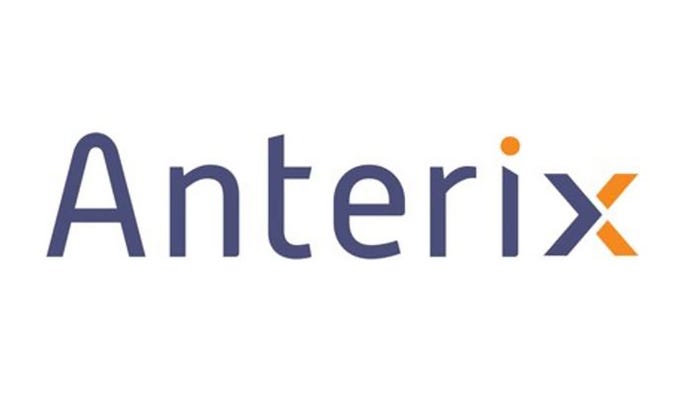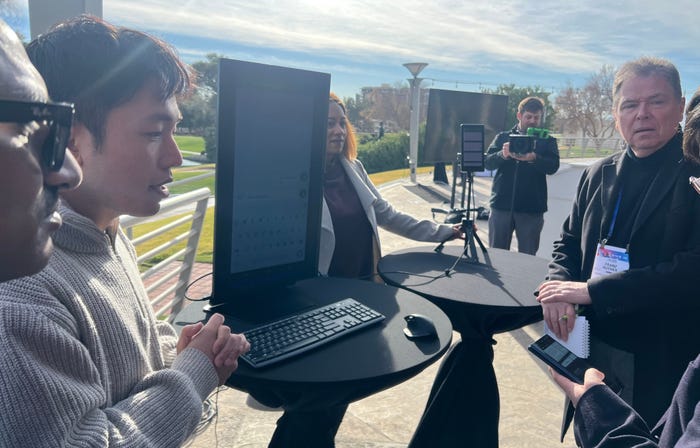Lynk begins operation of next-gen LEO satellite, plans to offer service in 2022Lynk begins operation of next-gen LEO satellite, plans to offer service in 2022
.jpg?width=1280&auto=webp&quality=95&format=jpg&disable=upscale)
Lynk Global today announced that its newly designed low-Earth-orbit (LEO) satellite is beginning operation in a key step toward the company beginning direct satellite-to-mobile-phone service next year—and broadband services by 2025—that could bolster first-response communications in the future.
Lynk co-founder and CEO Charles Miller reiterated company plans to launch at least two more satellites this year before increasing its launch rate significantly during the next few years in pursuit of realizing the goal of having 5,000 satellites in orbit in 2025.
“We’re going to start ramping up next year,” Miller said during an interview with IWCE’s Urgent Communications. “By this time next year, we’re going to be operating a commercial service around the world.
“We’ve applied for our commercial license from the FCC, and we’re anticipating having signoff from the FCC as our flagship operator maybe toward the end of this year or next spring. We’ll then initiate commercial service next summer.”
This latest satellite, called Shannon, is the 5th satellite launched by Lynk, but it incorporates learnings from the previous four test satellites, three of which have been deorbited. This satellite was designed in-house to be scalable, and Lynk officials believe it can produce 200 satellites per month, according to a company press release.
“Shannon is five times the mass, seven times the power, twice the RF gain as Lynk #4, and is designed for mass production,” the Lynk press release states.
Despite these increases in size compared to the previous Lynk satellite, the Shannon satellite is still a microsatellite that is bigger than a nanosatellite but about 25% of the size of the LEO satellites being launched by OneWeb or SpaceX, Miller said.
Although Lynk likely will launch some satellites that are larger in the future, the Shannon satellite can deliver signals directly to a normal cell phone with its 1-meter-by-1-meter phased-array antenna that acts as a “cell tower in space,” Miller said, noting that beliefs that much larger satellites are needed for such a link are mistaken.
“There is a false presumption that you need to have a massive satellite to provide this service to the world,” Miller said. “We can do decent-sized speeds with this satellite. Obviously, if we build bigger satellites, it will go faster.
“We’re not doing Battlestar Galacticas—that’s an orbital-debris problem. We could grow this to a Battlestar Galactica if we wanted to, but we just think that’s crazy. But that’s a choice. We could build a massive, huge satellite in orbit—we’re experts in satellite technology, so we know what that would take—we just think that makes no sense at this time.”
Lynk claimed its first successful test of satellite-to-cell-phone connectivity with one of its older test satellites in March 2020, with a text message being sent to several models of unmodified cellular phones in an area of the Falkland Islands well outside the range of any U.S. wireless operator.
While the space exploits of high-profile individuals like Richard Branson, Jeff Bezos and Elon Musk have grabbed headlines, the reality is that such efforts and investments are creating what Miller calls “cheap access to space.” This, in turn, is fueling a new generation of satellite communications that promises to alter first-responder communications strategies.
“We all love the Battle of the Billionaires—it’s like the Super Bowl in the sky above us,” Miller said. “But the benefit here is going to come in the form of saving lives … “In the future, [first responders] should anticipate that the Battle of the Billionaires is going to help solve emergency communications everywhere.”
Push-to-talk-over-cellular (PoC) technologies—from over-the-top applications like ESChat to carrier-integrated offerings that leverage Kodiak technology owned by Motorola Solutions or 3GPP’s mission-critical-push-to-talk (MCPTT) standard—have gained acceptance in the enterprise arena, where its cost, simplicity, flexibility and audio quality have shined in comparison to dedicated LMR networks.
Such broadband PTT solutions also are being used by mission-critical entities, but typically as only an augmentation to LMR systems, not as a replacement. The most-cited technical reason—by far—for public safety and other critical-infrastructure entities not relying fully on broadband PTT is the lack of communications when the terrestrial network is unavailable, which can be common in areas that are remote or that are suffering from a natural or man-made disaster.
While some powerful LMR devices can support talkaround communications with peers for miles, low-power LTE devices provide only limited range when not connected to a network, if they support direct-mode communications at all.
But solutions like Lynk’s direct-to-phone satellite offering eventually could mean that first responders—and those who to call for help or receive emergency alerts in remote locations—are almost never outside the range of an LTE network, according to Miller.
“If you’re going to be in the basement of a building, then you need to put a Wi-Fi hotspot in the basement,” he said.
“But everywhere else, satellite is going to solve this.”
Public safety has used satellite communications in the past, particularly in the aftermath of natural disasters like Hurricane Katrina in 2005. While certainly helpful as a last-resort communications technology when used properly, many first responders complained that legacy geosynchronous (GEO) satellite services were difficult to use and extremely expensive—pricing that was understandable, given the fact that it cost roughly $1 billion to be part of a rare launch that could put a single satellite 22,000 miles from Earth at the time.
But space economics have changed dramatically, even in the past five years, Miller said.
““It’s so much easier now to get stuff into orbit than it was five years ago,” Miller said. “The cost and the ease of getting into orbit … it’s probably one-fifth the cost and 5 times to 10 times more frequent, in terms of flights to orbit.
“And this is just the beginning. Five years from now, it’s going to be another three to five times cheaper and there will be another three to five times more frequent launches. This really is a game-changer that’s opening up this whole new industry.”
Having satellites only a few hundred miles from the earth’s surface—rather than 22,000 miles—provides a number of performance advantages compared to traditional satellite services. Lower latencies and the ability to link directly to a phone are the most obvious, but the ability to use sub-1 GHz frequencies means rain fade is not an issue.
“Rain fade is a problem for higher frequencies—the Ka band, the K band and higher,” Miller said. “One of Lynk’s innovations is that we use spectrum sharing, so you can do this over UHF, and there is no rain fade at UHF. The rain fade that people are used to happens in the mid-wave and millimeter-wave higher frequencies.”
Lynk hopes to leverage spectrum licensed to carrier partners. Lynk has 36 testing partners worldwide, but the company has not announced any commercial partnership with service providers to date.
When Lynk launches its offering next year, it will be limited only to text service to ensure that all users of the LEO satellite system will have the capacity necessary to communicate, according to Miller.
“Our first priority is to make sure that everybody has a little bit of connectivity,” he said. “Then, when we have enough capacity, we’ll start letting people in with broadband use cases. We want to make sure that no one gets knocked off first. That’s just the ethical and moral right thing to do.
“We think that the right place to start is to make sure that everybody has some connectivity and can do messaging. That’s going to save lives.”
Lynk should be able to offer continuous service worldwide after putting about 2,000 satellites into orbit, and full-fledged broadband services are scheduled to be offered after 5,000 satellites have been launched in 2025, Miller said. Lynk officials hope to build a system that public safety and other mission-critical entities can trust, he said.
“We really want to work with the emergency-response community to make sure that what we’re doing meets their needs, and the best way to do that is to engage as we’re designing this service,” Miller said. “So, we look forward to engaging more with the emergency-response community to make sure that their primary needs are designed into the service from Day 1.”





